- #aparelhagem
- #Brazil
- #colombia
- #ethnography
- #mexico
- #picó
- #practice-as-research
- #reggae
- #sonidero
- #sound system
Sound System Cultures Worldwide Pt.1
The first 2024 blog provides the opportunity to reflect on last year’s achievements and challenges. Starting out on the SST project four years ago we were most familiar with reggae sound systems, based on team members’ research knowledge and experience as owners and MCs. We were only dimly aware of other types of sound system. Now, with the project having completed the third of its five years, we have more than enough research to confirm that there are in fact no less than ten different types – or versions – of sonic street technologies, originating in different parts of the world.
Sound System Cultures Worldwide
What is usually understood in English as a “sound system” have different names in other parts of the world – aparelhagem, picó, sonidero, for instance. Crucially, the configuration of their equipment, music played, and performance style is quite distinct. In fact, the reggae or dancehall sound system may not even be the source of sound system culture as might be assumed on the reggae scene – a point made by a Colombian supporter in response to the claims in one of our early blogs.
If reggae sound system culture can claim to be the most influential and widespread sonic street technology to date, it is because the technological apparatus was harnessed to play a particular genre of music; and this was infused at a certain point with a particular revolutionary message – inspired by Rastafari and Black consciousness – which made it universally appealing. This, and Bob Marley’s world tours were an important inspiration for the take-up of reggae sound system culture across the planet. Other versions of the sound system have remained national or even local, not spreading outside their own diaspora. This can however be quite huge – as the Mexican sonidero sound system culture in the USA.
Across the Global South where they originate, all sonic street technologies have features in common. One is that they are all solutions to the same problem of providing mass entertainment for those at the margins of society and, at the same time, are used to generate direct and indirect revenues. A second is that they are overlooked, disparaged and harassed by the authorities. Thirdly, sound systems, each at the epicentre of vibrant scene, provide a vital medium for self-expression and identity for which material resources are likely lacking. As one Colombian collaborator explained, the picó became the main cultural institution on the Colombian Caribbean coast in the 1970s and the 1980s precisely because of the scarcity of existing cultural institutions or facilities. In the Global North, reggae, like hip hop, is adopted as a protest music, as well as a matter of choice for those with the resources to build sounds.
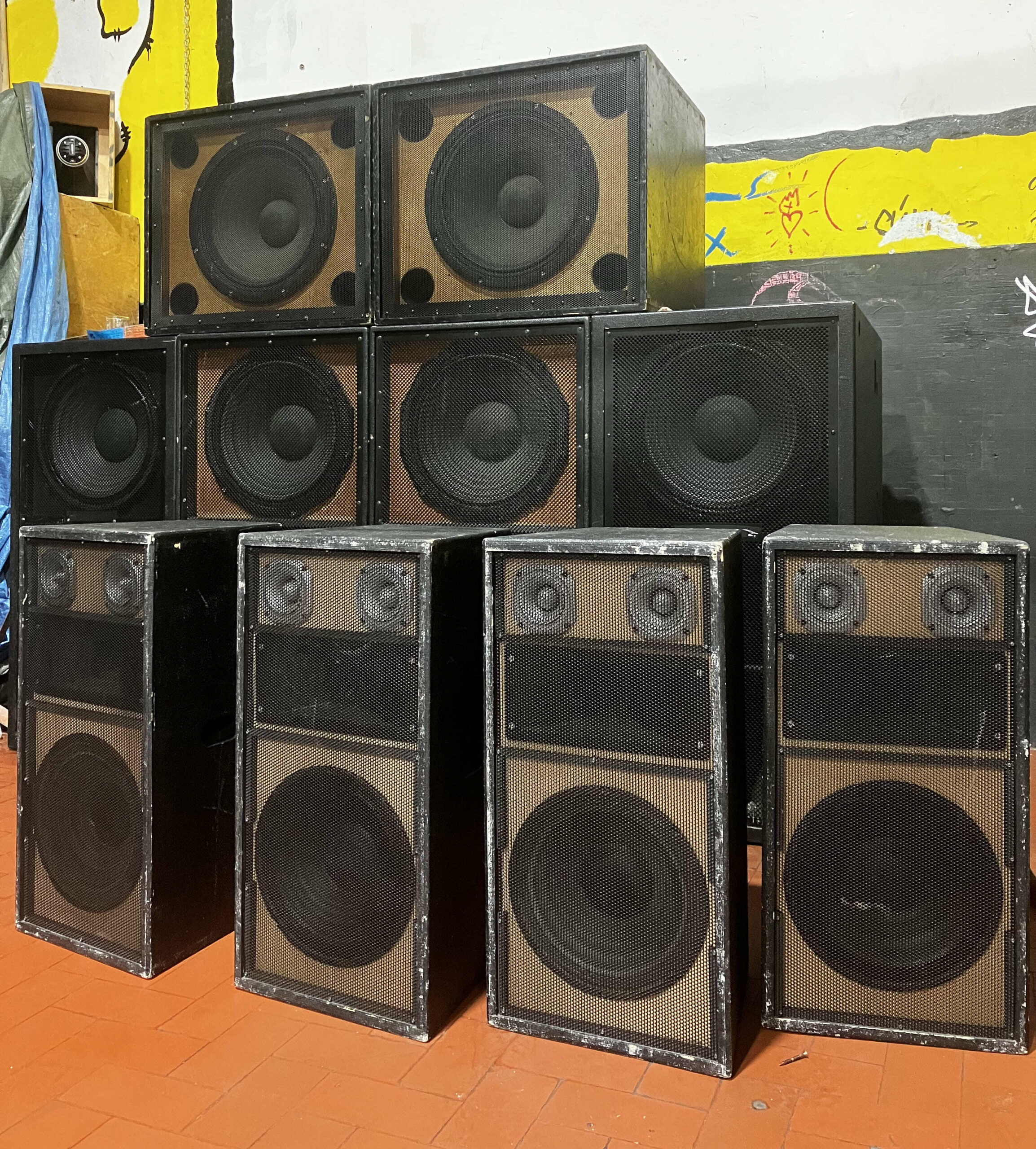
Bababoom Hi Fi, reggae sound system from Italy © Brian D’Aquino
It is interesting to note that all but one version originates in the Latin America, four of them in Brazil. Further research is required on this, as formulated in terms the SST main theme of enquiry: the relationship between technology and culture.
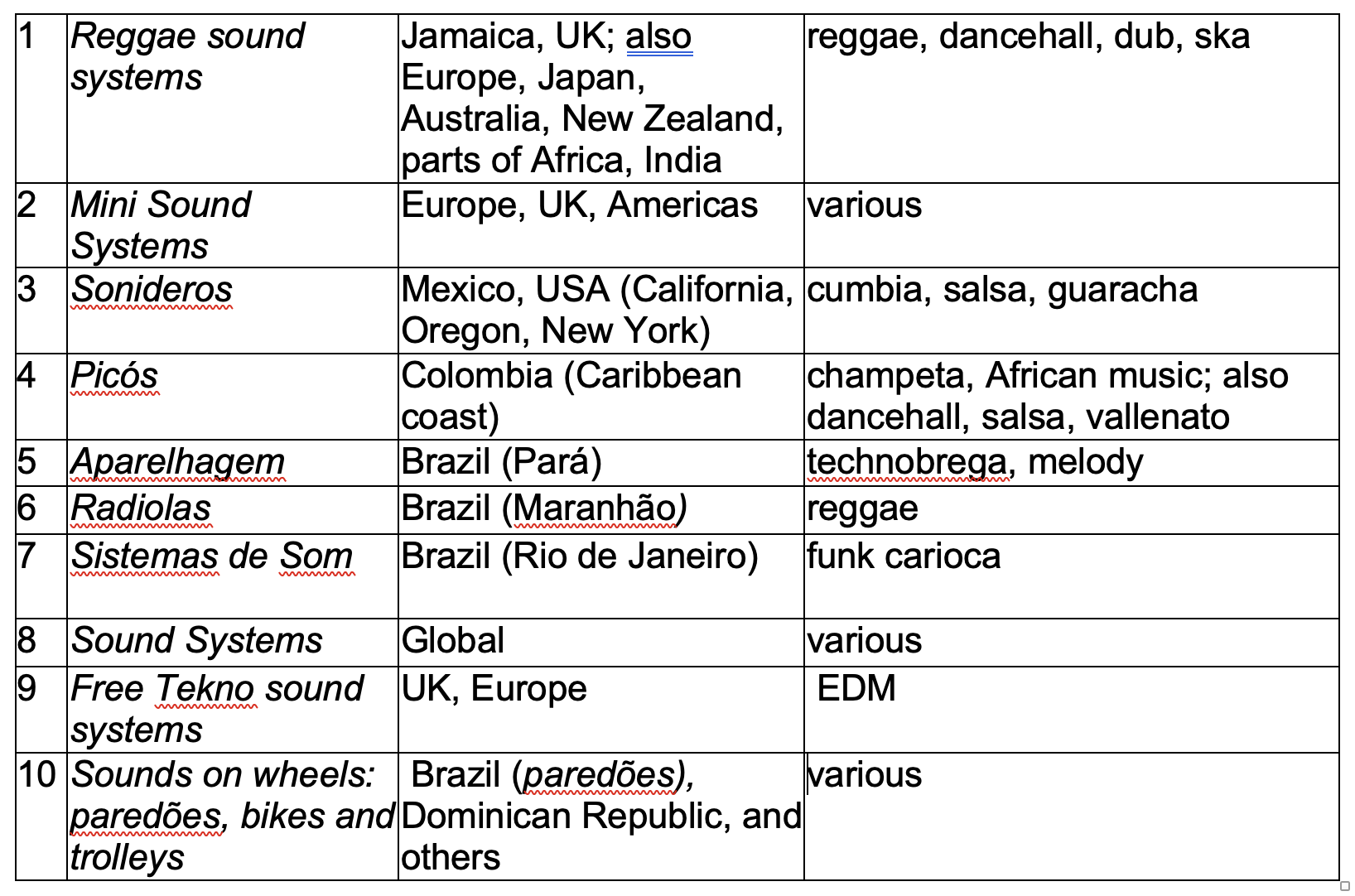
It must be noted that a completely neat classification is not possible due to the high degree of regional variation and, sometimes, overlapping between different SST set up and music style. Also, our Brazil research on SST other than radiolas will only begin in 2024. Therefore, this tab is intended as a handy guide to the variety of existing sonic street technologies and a framework for this year’s annual report on the project’s activities. Several of these, such as the video archive and the annotated bibliographies are new this year. Others, like populating the sonic map, facilitating reasoning sessions, and commissioning short sound system films continue as in previous years. Also, we have continued to consolidate the SST network of local researchers and their teams.
As well as the empirical work on which the project is based, it is also important to describe the methodologies with which we conduct the research, on which we have our first publication in Performance Matters journal. Similarly, we are currently developing a theoretical framework in which to locate our research. These methodological and theoretical accounts are important to add depth to the case studies, but also to be able to use our findings as evidence of more general principles of the relationship between technology and culture to be found in other fields.
Colombian Picós and sound systems
We kicked off the research in Colombia. The Northern Coast region of this Latin American country is home to the picós or pick up. Colourfully hand-painted, picós mainly play African music and champeta. They are a pillar of the local popular culture and an important identity tool as they have historically helped to express the African roots of most Colombian Caribbean people musically. In the last decade, Colombia as much of Latin America has also seen the rise of reggae and dub sound system, mainly operated by young people inspired by their British and European counterpart, with a growing scene backed by frequent touring and technology exchange across the Atlantic. One example is El Gran Latido, who has provided us with a much-needed entry into the country’s SST culture. Some of this early research has been documented in this blog (see part 1 and part 2).
While approaching the country’s rich sound system environment in person, the project has also scoped out the existing research. We commissioned independent researchers Juan Jose Carbonell and Edgar Benitez to compile an annotated bibliography on pico culture and champeta music, available at this link. This work has been further expanded in a blog (see part 1 and part 2) by identifying trends and gaps in the existing research.
Finally, one of the most significant streams of the Colombia research so far has been working alongside the Urabá Sound System Collective. Their immensely important work in reinvigorating and de-stigmatizing pico culture in the Uraba region by mobilizing practitioners around a social and political agenda (see this blog) has been the subject of a research documentary, currently being edited, which will make the case for a REF (Research Excellence Framework) Impact case study led by Dr Brian D’Aquino. [1]
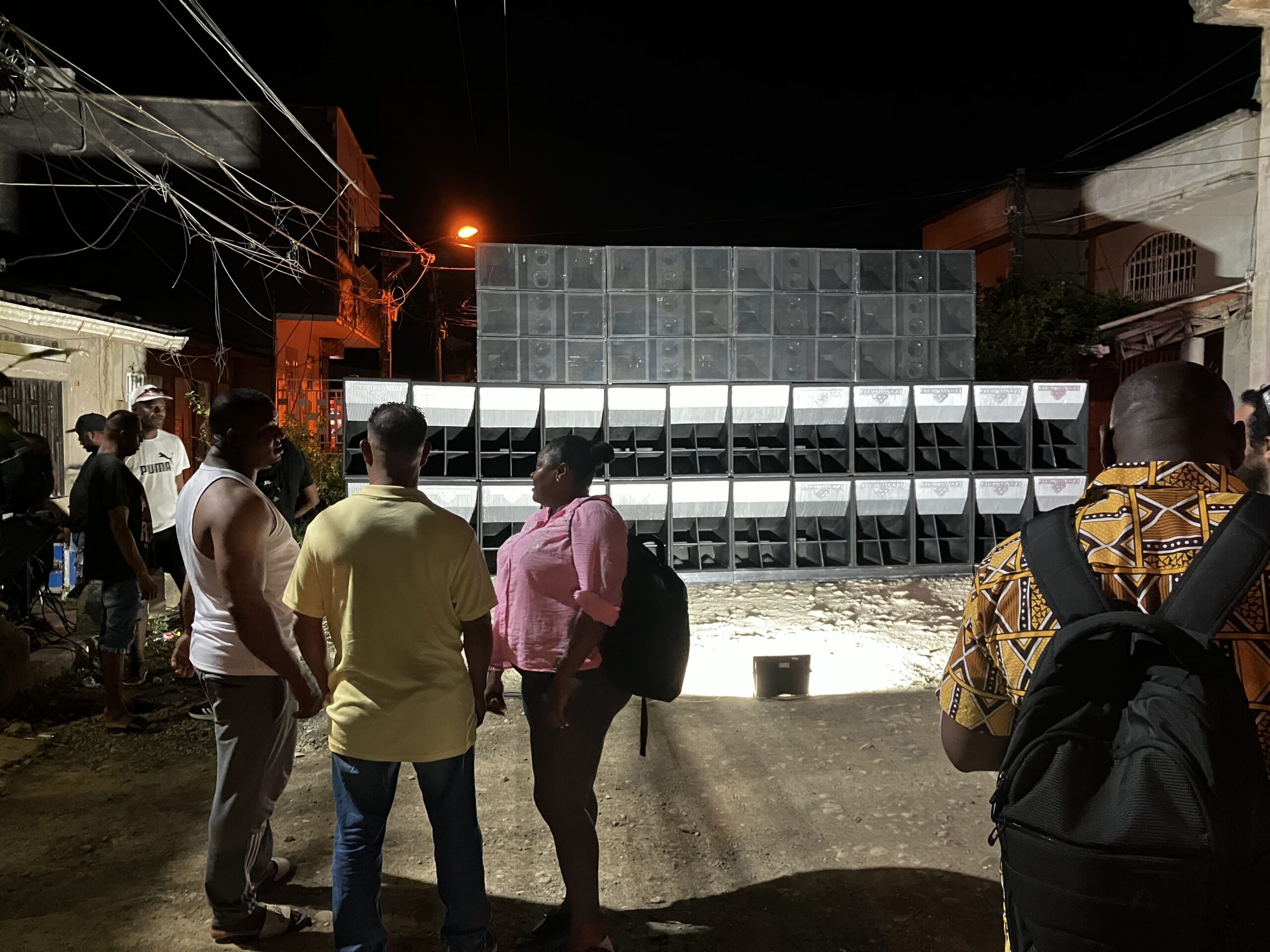
Danger sound system testing the new bassline in Turbo, Urabá © Brian D’Aquino
Brazilian Radiolas and Aparelhagens
We are very pleased to have begun work in the vast musical continent of Brazil with our collaborator there, People’s Palace Projects do Brasil, artistic director Prof Paul Heritage. In fact, long-standing colleague and SSO co-founder Leo Vidigal and Marcus Ramusyo Brasil have been at work on the radiola sound systems of São Luís in the state capital of Maranhão in Northern Brazil for some time, São Luís being Marcus’ hometown. Their initial research output has been SST resources: radiolas in Maranhão, Brazil Such annotated bibliographies serve both as an initial scoping out of the research field and a valuable publicly accessible resource for other researchers.
Another stream of the Brazil research has brought us to Belem, capital of the state of Parà state in the Amazonia region. Here, the leading sonic street technology is the aparelhagem, huge systems playing home-grown music genres such as tecnobrega and melody and attracting a crowd up to hundreds of thousands. This is by far the main popular culture in Parà, considering the number of followers and practitioners and the intensity of the involvement it generates. Nonetheless, it has earned the title of peripheral culture in Brazil due to its subaltern origin and the historical isolation of the Amazonian region. Researcher Natalia Figueredo has provided an early account of the aparelhagem culture in her hometown of Belem in this blog and she is currently finalizing a book chapter.
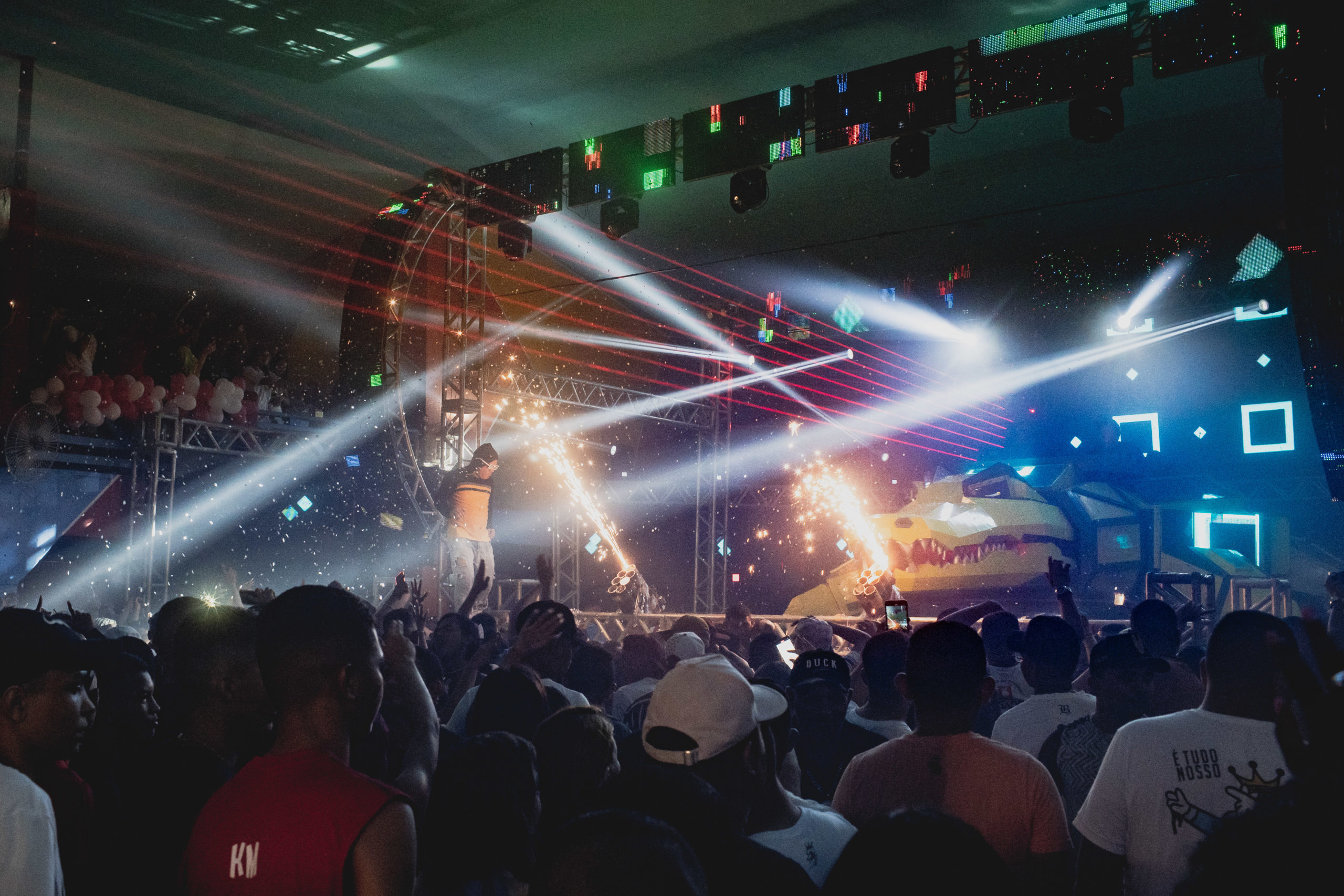
An aparelhagem party in Belem © Bruna Brandão.
Mexico Sonideros
Research in Mexico has also been making good progress since our visit there in December 2022. Dr. César Rebolledo of the University La Salle CDMX has been the lead researcher. His first project has not been on the sonidero in Mexico itself, where the city of Puebla is an epicentre of the culture, but rather on its diaspora in the United States, particularly New York. César reports his initial investigations in Puebla-York: memories of a sonic diaspora.
While SST researchers always retain their professionalism, the work could not be done with a quite a considerable degree of enthusiasm. As César wrote to the team:
When I say that I love the SST project, it is because I am truly passionate about it. As an empirical bass player, I have for a long time blocked any academic thinking about what I consider to be the most sacred thing in life: Music. I mistakenly thought that music was just for feeling. And now I realise that thinking about music is also a way of feeling it. For me, this new way has been a joy…
It is certainly a joy for us that the research process can have such positive effects for our researchers.
The SST project also held a major in-person event lead by researcher Linette Rivera and Dr Rebolledo to support the roll out of the sonic map in Mexico City. This was entitled Baile Raiz y Cultura Sonidera, and took place on the 20th of December 2023. The event gathered local practitioners, researchers and aficionados of both sonidero and the sound system cultures around the purpose of mapping the city’s rich street music scenes.
USA Sonideros
Towards the end of the year the SST research collaboration in the USA got underway under the direction of Prof Josh Kuhn, Vice Provost for the Arts,
University of Southern California. Researchers Paulina Lanz and Fernanda Soria Cruz have begun to explore some of the richness of the substantial Californian sonidero scene central to Mexican diasporic community participating in the Cumbia Sin Reglas (Cumbia Without Rules) conference in the Public Programming at the Hammer Museum in October. We look forward to blogs on their research process and early findings.
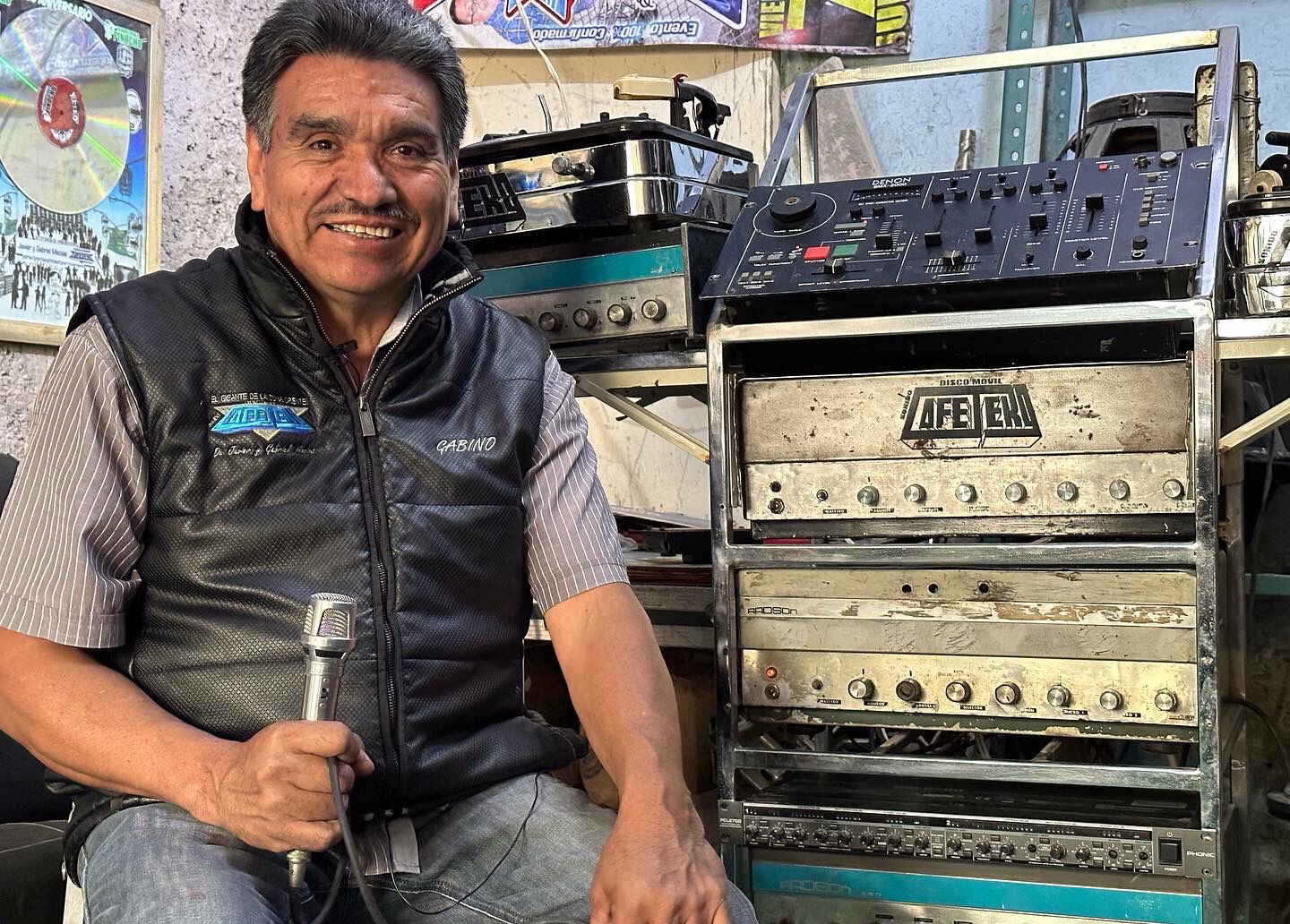
Sonido Cafetero, CDMX © Cesar Rebolledo
The second part of our annual report coming next week will provide updates on our ongoing research in Europe, UK, Australia and New Zealand, India, Canada, and more.
[1] UK Universities are obliged to submit all the research done by their staff to be graded and thereby ranked.
